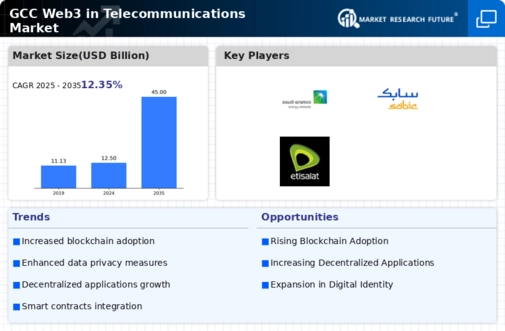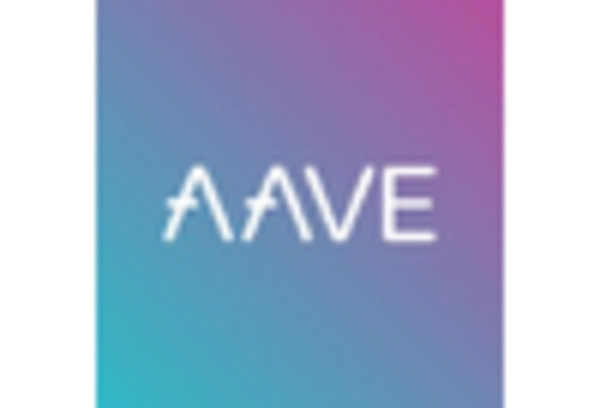The web3 in-telecommunications market is currently characterized by a dynamic competitive landscape, driven by rapid technological advancements and increasing demand for decentralized communication solutions. Key players such as Helium (US), Filecoin (US), and Chainlink (US) are strategically positioning themselves through innovative approaches and partnerships. Helium (US), for instance, focuses on expanding its decentralized wireless network, which allows users to earn tokens by providing coverage. This strategy not only enhances its operational footprint but also fosters community engagement, thereby shaping a competitive environment that emphasizes user participation and network growth.
In terms of business tactics, companies are increasingly localizing their operations and optimizing supply chains to enhance efficiency and responsiveness. The market appears moderately fragmented, with several players vying for dominance. However, the collective influence of major companies like Polkadot (US) and Aave (FR) suggests a trend towards consolidation, as these firms leverage their technological capabilities to create synergies and enhance service offerings.
In October 2025, Filecoin (US) announced a partnership with a leading telecommunications provider to integrate its decentralized storage solutions into existing infrastructures. This move is strategically significant as it not only broadens Filecoin's market reach but also positions it as a key player in the evolving landscape of data management within telecommunications. The integration of decentralized storage could potentially reduce costs and improve data security for telecom operators, thereby enhancing their service delivery.
In September 2025, Chainlink (US) launched a new oracle service specifically designed for telecommunications applications. This service aims to facilitate real-time data feeds for smart contracts, which could revolutionize how telecom companies manage their operations. The strategic importance of this launch lies in its potential to enhance operational efficiency and enable more sophisticated service offerings, thereby providing a competitive edge in a rapidly evolving market.
In August 2025, Aave (FR) expanded its decentralized finance (DeFi) services to include telecommunications-related financial products. This strategic expansion reflects a growing trend of integrating financial services with telecommunications, potentially offering new revenue streams for telecom operators. The significance of this move is underscored by the increasing convergence of finance and technology, which is likely to reshape traditional business models in the sector.
As of November 2025, current competitive trends are heavily influenced by digitalization, sustainability, and the integration of artificial intelligence (AI) into telecommunications. Strategic alliances are becoming increasingly vital, as companies seek to leverage complementary strengths to enhance their market positions. Looking ahead, competitive differentiation is expected to evolve from traditional price-based competition towards a focus on innovation, technological advancements, and supply chain reliability. This shift indicates a transformative phase in the market, where the ability to adapt and innovate will be paramount for sustained success.

















Leave a Comment